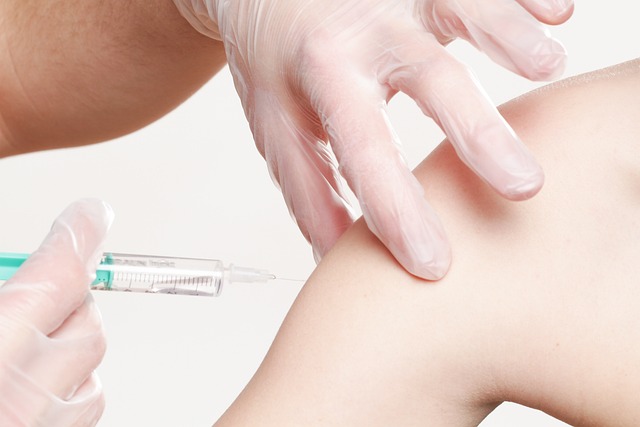CHOC neuro-oncologist initiated a clinical trial to test a vaccine for DIPG, a rare and devastating cancer.
Pediatric oncology program supports novel clinical trials for DIPG
In collaboration with Ann & Robert H. Lurie Children’s Hospital of Chicago, Dana Farber Cancer Institute and Alberta Children’s, the Hyundai Cancer Institute at Children’s Health of Orange County (CHOC) is enrolling patients in an investigator-initiated phase 1 clinical trial to evaluate the safety and efficacy of a novel vaccine in combination with antibodies designed to potentiate the immune system to treat diffuse intrinsic pontine glioma (DIPG), a uniquely devastating disease. The development marks a groundbreaking approach to treating DIPG in kids.
DIPG: A devastating diagnosis
A unique brain tumor for which oncologists can currently offer no options for curative treatment, DIPG has a 1% five-year survival rate. The median overall survival is only 12 months. To find a treatment for DIPG, CHOC is supporting the testing of a new vaccine and combined immunotherapy.
During her tenure as pediatric neuro-oncologist and section head of neuro-oncology at CHOC, Dr. Ashley S. Plant-Fox, current A.M. Khokhar Research Scholar and neuro-oncologist at Lurie Children’s Hospital of Chicago and Assistant Professor of Pediatrics at Northwestern University Feinberg School of Medicine, developed the clinical trial protocol and secured funding. Dr. Plant-Fox worked in collaboration with Dr. Josephine HaDuong, also of CHOC.
Dr. Plant-Fox is working with Agenus, a biotechnology company focused on cancer immunotherapy, to provide a neo-antigen heat shock protein vaccine known as rHSC-DIPGVax with the adjuvant STIMULON™ QS-21 Solution in combination with anti PD-1 (balstilimab) and CTLA-4 (zalifrelimab) antibodies. The vaccine is designed to stimulate T-cells to attack specific neo-antigen markers present in 80% of DIPG cases. Enrollment for the phase 1 clinical trial is ongoing, with sites at CHOC, Lurie Children’s Hospital and Dana-Farber.
A unique challenge
DIPG presents rapidly, with patients typically experiencing just two to three weeks of symptoms that appear most commonly around ages 5 to 8. Symptoms can include sudden neurologic changes, such as:
Difficulty moving one side of the face
Difficulty swallowing
Vision changes, such as double vision
Weakness on one side of the body
“A lot of other brain tumors will present with months of symptoms, but DIPG causes an acute decline of functioning,” Dr. Plant-Fox says. “The other uniquely devastating thing about DIPG is that it doesn’t form a mass somewhere in the brain.”
Instead, DIPG causes cancer cells to grow diffusely and intrinsically into the brain stem, expanding the brain stem and compressing structures in that area. Because of its growth pattern, it is impossible to separate the cancer cells from healthy structures, and therefore surgical resection is not possible.
A novel approach
In 2014, researchers published genetic sequencing results for DIPG tumors, a breakthrough allowing Dr. Plant-Fox to propose a new DIPG treatment hypothesis.
“According to the data on the genetic sequencing of DIPG tumors, around 80% share similar genetic profiles, one element of which is a histone mutation called H3 K27M,” Dr. Plant-Fox says. “Because the genetic changes are pretty limited in these tumors, we collaborated with Agenus to try to see if the vaccine backbone they were already using for adult tumors could be modified to use for DIPG.”
How the DIPG vaccine works
The rHSC-DIPGVax vaccine is made of a heat shock protein backbone which is formulated with 16 peptides that represent the different genetic alterations in DIPG.
“Some of those peptides correspond to the protein sequences related to the histone genetic alteration,” Dr. Plant-Fox says. “Our hope is when the vaccine is injected, it interacts with the immune system to teach the T-cells to attack those same markers present on the tumor in the brain as well as other common genetic markers present in this tumor type.”
We have learned that combination immunotherapy may help cancer vaccines be more effective. We will combine the vaccine treatment with monoclonal antibodies in subsequent treatment arms. Tumors can escape the immune system response by putting up an “off” signal for PD-1, a checkpoint blockade molecule. The anti-PD-1 antibodies can then bind to the checkpoint molecule and hinder its ability to turn off the T-cells. This can help promote the T-cell response to the vaccine.
“The vaccine is teaching the body to recognize markers of cancer,” Dr. Plant-Fox says. “In theory, the vaccine should also train cells that go on to surveil the rest of the body for cancer cells to keep it from coming back.”
Patients receive the vaccine approximately six to 10 weeks after radiation, after the immune system is primed to attack cancer cells.
Making leading-edge research happen at CHOC
Dr. Plant-Fox’s clinical trial to test a vaccine treatment for DIPG does not receive government funding and therefore could not have happened without CHOC donors, including RDL Charitable Trust, the Elerding Foundation, the Will Irwin Fund through the Pediatric Cancer Research Foundation, Team Jack Foundation, LiamBear Strong Fund, CHOC families and other private donors.
“The early funding was crucial in getting this clinical trial off the ground,” Dr. Plant-Fox says. “CHOC families and donors who support this trial made it possible for all the other sites to open as well.”
The current, first phase of the trial will assess the DIPG vaccine’s safety and efficacy. If the vaccine response proves tolerable in pediatric patients, researchers will move into a larger, phase 2 trial to gather enough data to determine whether it can effectively treat DIPG. The trial marks one of many phase 1 clinical trials the Hyundai Cancer Institute at CHOC has initiated.
CHOC – article Here

